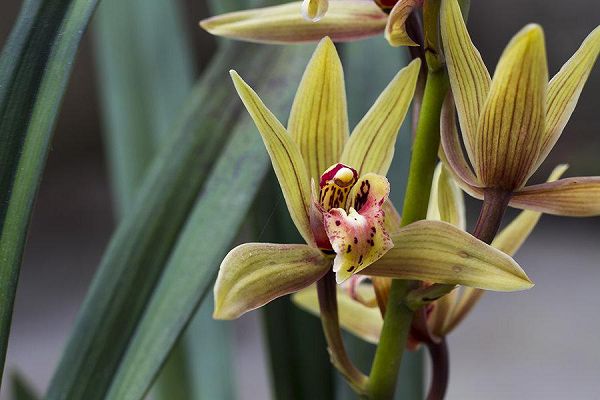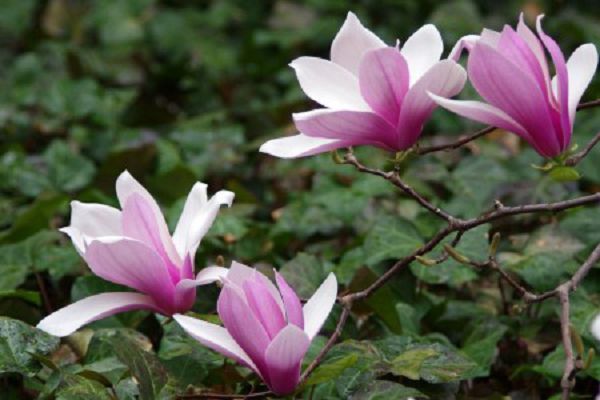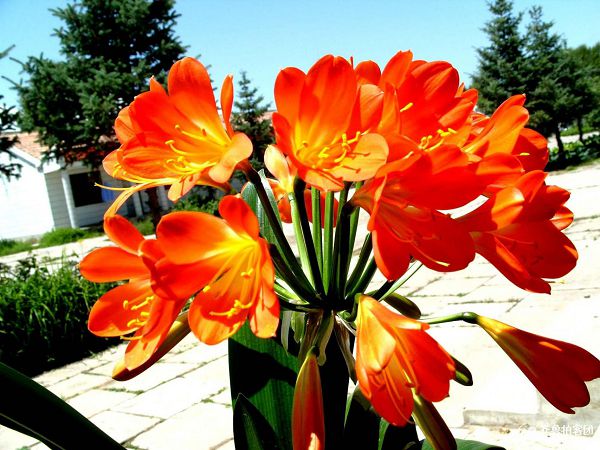Summary of common diseases in orchid culture

The main diseases of orchids:
① anthracnose: the pathogen is Cercospora orchid, which is mainly harmful to the leaves of orchids. The disease spot is nearly round, the central part is light brown or grayish white, and the edge is purple or dark brown. It is mainly infected with many kinds of orchids, such as Cymbidium, Cymbidium, Jianlan, Chunlan and so on.
The suitable temperature for the growth of bacteria is 22 ℃-28 ℃, and the humidity is more than 95%. The spore germination of the pathogen is infected through the wound. Foliar spraying and watering are easy to aggravate the disease; orchid plants are placed too densely, leaves crisscross with each other are also easy to infect, and there are differences in susceptibility among varieties. "Big head element" in Milk Cymbidium and "Da Fu Gui" in Chunlan are more susceptible to disease. "iron stem orchid" in Taiwan orchid and Jian orchid is more resistant.
Prevention and treatment methods: cut off the diseased leaves and burn them in time; avoid foliar spraying as far as possible, strengthen ventilation and light penetration; spray 50% carbendazim or 50% topiramate 500-600 times at the initial stage of the disease.
② spot rot: for many orchids, this is an extremely serious disease that starts at the base of the stem and then quickly spreads to the leaves and roots. ③ black rot: this disease mainly occurs in Cartland, it is mainly caused by water mold, the disease is more serious in low temperature and high humidity environment. It first occurs in the root, and then extends to the pseudo-bulb and leaves, causing plant death. It usually spreads when changing pots and dividing plants.
④ Cartland leaf spot: the disease is so common that it can be found in any greenhouse where Cartland is cultivated. There are usually small round black spots on the tip of the leaf, with clear boundaries. High humidity causes leaves or false bulbs to rot. The disease can infect plants of the genera such as Shixiantao, Fritillaria, Cartland, Paphiopedilum and Leymus.
⑤ bacterial soft rot: it is a sexual disease of Cartland and is easily transmitted. First of all, water-immersed dark green spots appear at the end of the leaves, and then expand the awn. Germs invade people by wounds, and they invade many cultivated plants. Some species of the genus Caran, Phalaenopsis, Golden Phalaenopsis, Paphiopedilum and Magnolia are susceptible to infection.
The prevention and control methods of leaf spot, spot rot, black rot and soft rot: first of all, do a good job in the environmental hygiene of the cultivated orchid field, clean up the dead branches and leaves in time, eliminate and eliminate the sources of bacteria, strengthen management, promote plant growth and improve resistance. Strengthen ventilation and light transmission, properly reduce air humidity, and minimize foliar water spraying.
When diseased plants are found, the diseased leaves should be cut off and destroyed immediately. Disinfect the orchid cultivation environment and spray disinfectant on tables, greenhouse roads and even flowerpots.
The antimicrobial agents were sprayed on orchid plants: 50% benzoylammonium 800-1000 times, 70% methyl topiramate 700-800 times, 50% wettable carbendazim powder 1000 times.
Virus disease of ⑥ orchids: a disease caused by viruses, which is common and serious in orchids. Although no effective prevention and control methods have been found so far, through years of research, we have basically mastered the characteristics of the virus and the law of the occurrence and development of viral diseases. On this basis, it is very effective to take some prevention and control measures.
Types of orchid virus diseases: up to now, at least 7 kinds of viruses have been found and identified in cultivated orchids.
Black spot of tiger orchid: it is the earliest viral disease found. It can be harmful to Magnolia, Shrimp Ridge Orchid, Cartland and its hybrids, Tiger Orchid, Magnolia, Phalaenopsis, Wandai Orchid and Cymbidium. There are jewel-like necrotic black spots on the leaves of Cymbidium, but it is different from anthrax on Chinese orchids.
Tiger head orchid wheel spot necrosis: it infects tiger head orchid, Cartland, bract tongue orchid and other plants. There are wheel-shaped necrotic spots on the leaves of Cymbidium.
Tooth petal orchid spot disease: this virus mainly infects shrimp ridge orchid, Cartland and its hybrids, tree orchid, tooth petal orchid and other genera. There are wheel-shaped necrotic spots on the leaves of the tooth petal orchid.
Cucumber virus disease: mainly infects Dendrobium and Milton blue plants. There are wheel-shaped discoloration spots on the leaves of Dendrobium.
Control methods: strictly select and plant virus-free seedlings and sowing seedlings; remove weeds in the garden on time to control pests; immediately remove and destroy diseased plants; disinfect tools and hands that come into contact with diseased plants in time, pots and potted materials planted with diseased plants can no longer be used.
Anthracnose of ⑦ orchids: at the beginning of the disease, round or semicircular reddish brown patches appeared on the leaves, then became dark brown, and yellow halos appeared around the disease spots. When the disease spots were serious, the disease spots joined together to form a strip, and the center became gray and white with small black spots, which made the whole leaf necrotic and the leaf base rotted and fell off.
In the rainy season and greenhouse maintenance stage, if the ventilation is poor, the basin soil is too wet, and the sun can not be seen for a long time, the disease is relatively serious, do not sprinkle water on the plants, otherwise it will expand and spread, and some varieties have strong disease resistance, such as "iron bar" and "Pulan" in Jianlan; the disease resistance of Mulan is medium; the disease resistance of "Yunfengsu" and "Da Fu Gui" in Jian Lan is weak. In the areas where the disease is serious, except for the cultivation of disease-resistant varieties, the basin distance should be extended during indoor and outdoor maintenance. After the onset of the disease should reduce fog, pay attention to ventilation, at the same time spray carbendazim 800-1000 times diluent, 3 days once, even 3-4 times, the disease can be controlled. It is best to cut off the seriously affected leaves and burn them.
Related
- Is the orchid suitable for indoor use? Is it good for the body?
- How to prevent the empty root of orchids?
- What to do after the crab claw orchid is withered?
- Why are the leaves of orchids always yellow? Fertilizing and watering.
- Can the root of the gentleman orchid be saved if it is rotten?
- Diagnosis and treatment of cotton-blowing beetle insects in Cymbidium
- There is a way for a gentleman's orchid to rot.
- What is the most suitable temperature and humidity for the orchid?
- How to raise a gentleman's orchid? Cultivation techniques of Cymbidium
- How to prepare the nutritive soil for the cultivation of Cymbidium



